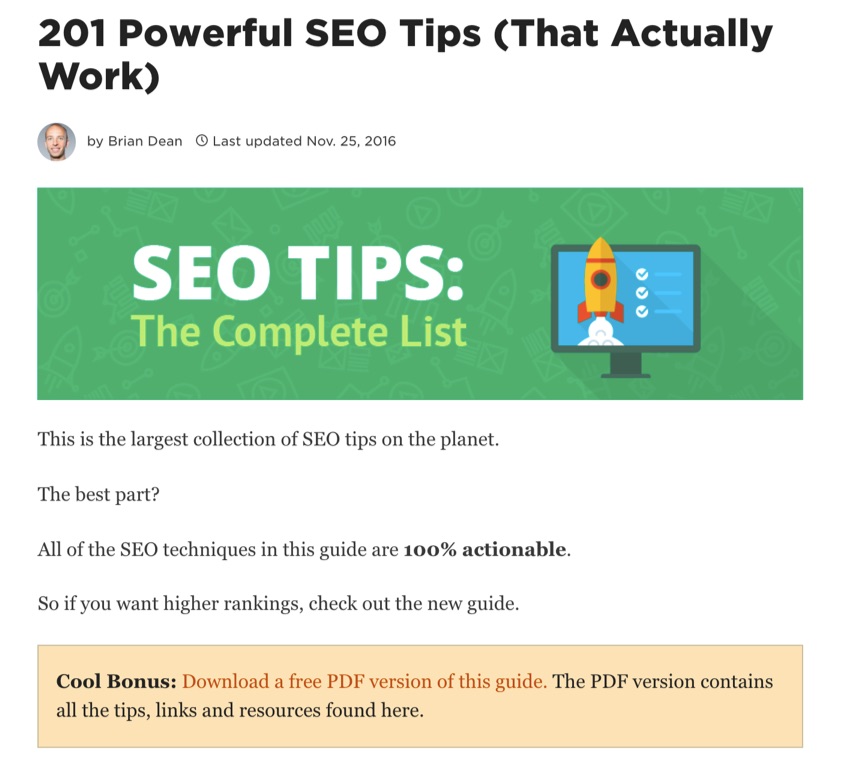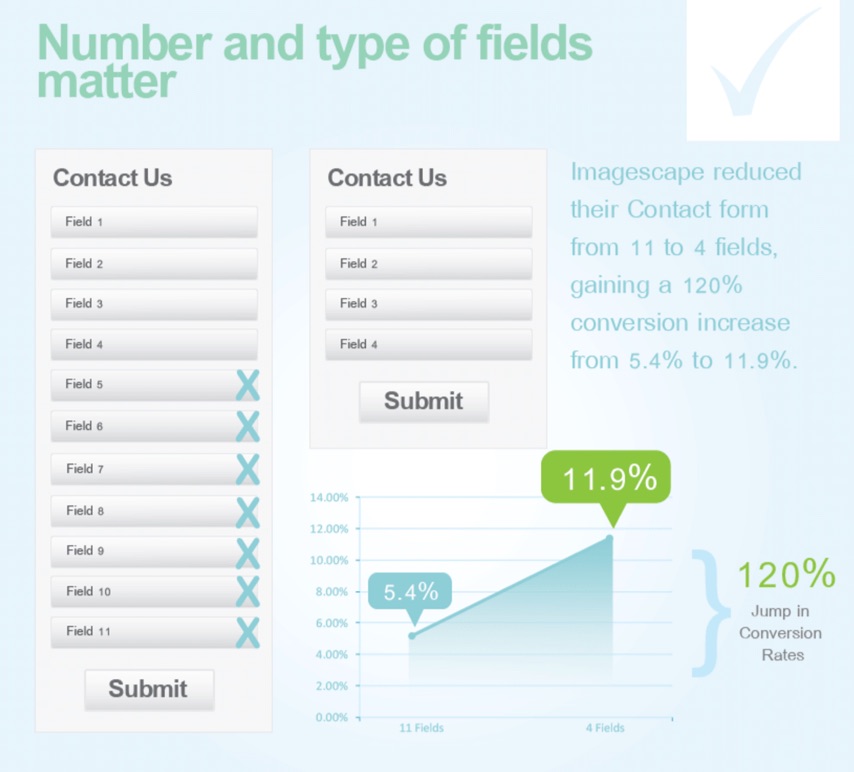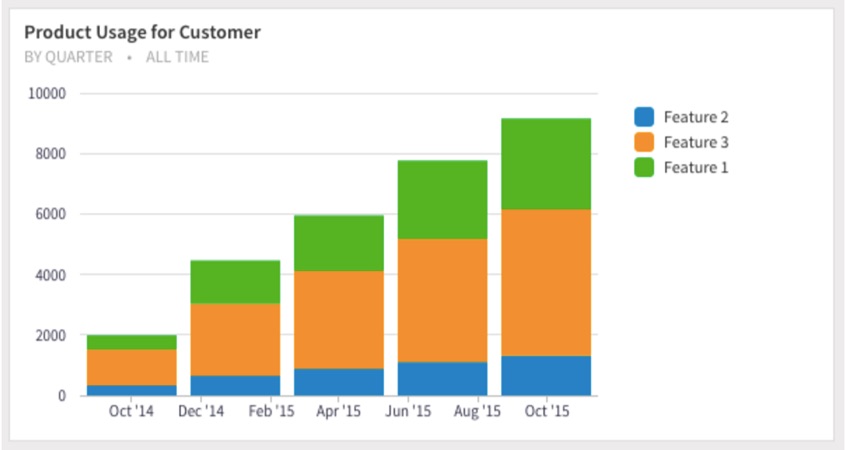Today’s marketers are inundated with data.
To stay ahead of the competition, your SaaS company must focus on customer insights to boost conversions. Push the limits to discover gaps in your customer data.
“By measuring, interpreting, and applying knowledge from customer experiences, and using this information to fuel decisions, companies can elevate their customer insight function—and their own position in the marketplace,” writes Christine Barton, senior partner and managing director of The Boston Consulting Group.
It’s time to find out what matters to your customers. Let’s explore how your SaaS team can gain more knowledge.
On-Site Behavior
For some businesses, the website is sometimes the only interaction a consumer will have with a brand. Therefore, it’s essential for companies to understand how buyers engage with their sites.
On-site behavior refers to consumers’ actions on your website. This engagement ranges from what page of content they visit to what calls-to-actions they click.
By observing visitors, you’ll learn what interests the potential buyer and what issues arise that cause them to cease engagement .
This data is especially important when it comes to moving consumers down the sales funnel. On-site behavior can uncover friction points hindering buyers from completing a transaction.
A Sitecore whitepaper noted that “these [on-site] interactions are most fruitful when they include behavior in real time. Think of this as ‘implicit profiling.’ It is a prime source for understanding in-the-moment intent.”
Knowing the buyer’s intent helps your team predict future behavior and prepare marketing efforts to persuade consumers.
For instance, if you know buyers prefer downloading your content to read later, your team can include a PDF content upgrade in relevant posts. Here’s an example from Backlinko.
Monitor consumer behavior on your website, and then, use that newfound knowledge to improve the customer experience.
Forms and Surveys
Everything on your site serves a purpose. Forms and surveys give your team a chance to ask consumers for pertinent information.
However, most companies view forms as a way to gain every single detail about a buyer. And honestly, this is an impossible feat to accomplish, which often annoys the visitor.
According to the 2015 B2B Web Usability Report, 69% of respondents indicated that “excessive form field requirements” would deter them from completing a general inquiry form, with 65% stating they wouldn’t submit a form if “too much personal information” was required.
Consumers don’t want to waste their precious time answering a 20-question form to receive your free ebook. They would rather fill in a few form fields and possibly give you more details later.
But there is a dilemma facing marketers between quantity and quality when collecting data from forms and surveys. Shorter forms often generate lower quality leads since people can quickly complete them.
On the other hand, if a consumer takes the time to finish more form fields, it’s likely they are more interested in your products.
Run your own tests to learn what works best for your business. Research will help your team determine the balance between acquiring information and earning conversions.
Use forms and surveys as a tool to gather data about your target audience, and generate the best leads by experimenting with the number of form fields.
Product Usage
Earning a sale is only the beginning of really understanding your consumers’ needs. Usage data reshapes how your team tweaks the product.
This type of data is necessary to find the true value of the product. SaaS teams must know the actual and perceived benefits from the customer’s perspective.
By following patterns, you’ll learn which customer types use the product, the frequency of the customer’s use, and how the customer navigates through the application. Customers possess different reasons for using your product, and usage data can reveal their real intentions.
“From the lens of Customer Success, it’s the trends in the usage data that are really important. What happened today, or this week, are vaguely interesting by themselves. But what happened this week, compared to the last 30 weeks, becomes extremely valuable,” states Dan Steinman, head of Gainsight EMEA.
Usage data also helps determine which features customers value the most. You may need to discontinue outdated features or even provide more user training for newer ones.
Let your product usage patterns highlight growth opportunities, underline competitive advantages, and point out new markets to pursue.
Customer Complaints
Your SaaS business isn’t immune from unsatisfied customers. Not everyone will be pleased with your products and customer service.
Nevertheless, don’t consider customer complaints as a scarlet letter for your company. Listening to your buyers’ grievances is an opportunity to improve your brand’s services.
Be proactive about receiving your customers’ opinions by soliciting feedback on your website and in email campaigns. Give consumers the option to rate your service on a scale of 1-10 after a support call.
Work with your team to interview a select group of disgruntled customers. When doing so, make it a point to just listen to their concerns and not rebut with a quick answer. And be prepared to ask questions that get to the root of the problem.
“Probing questions are essential to get at the deeper meaning behind what the person says. This is how you get insights that surveys can’t provide. The trick is to gently ‘probe’ for more information on a topic without coming across as aggressive or pushy,” says Dustin Walker, Chief Creative at Good Funnel.
Also, train your staff to engage with upset customers. Give them scenarios to practice, and observe their responses. How would you respond to the email below?
Deriving knowledge directly from the customer is a major win for increasing conversions.
Taking Real Action
Customer insight is useless if it’s not integrated into your business strategy. So while learning all the techniques above is commendable, the real work begins when you implement them.
“If you want your consumer insights team to make bold recommendations and stop inundating you with endless charts, tables, and data points, then don’t focus on their methods over their message, and don’t demand statistical significance when it really doesn’t matter,” states Julie Wittes Schlack, SVP of innovation and design of C Space.
Too often companies get paralyzed by wanting to do everything at once and that’s not realistic. If you operate a small SaaS team, focus on executing strategies that will result in big wins. A team concentrating on a single issue is better than a team doing none.
Promote a culture of experimentation within your company. Because innovation sprouts from failures, your staff must feel comfortable with making mistakes and know that their blunders will be seen as lessons.
After taking action, push your team to continue that momentum. Question the results of your tests and always seek input from your consumers.
Actively engage your strategic plans to transform visitors into customers.
Converting With Data
If conversions are what you seek, data is helpful for attaining your goal. Concentrate on customer data that will enhance the experience.
Monitor on-site behavior to know exactly how your buyers interact with your content. Gain direct knowledge by asking customers questions via forms and surveys, and give your team the space to take real action.
Boost your conversions with customer insights.
About the Author: Shayla Price lives at the intersection of digital marketing, technology and social responsibility. Connect with her on Twitter @shaylaprice.
source https://blog.kissmetrics.com/right-customer-insights/





No comments:
Post a Comment